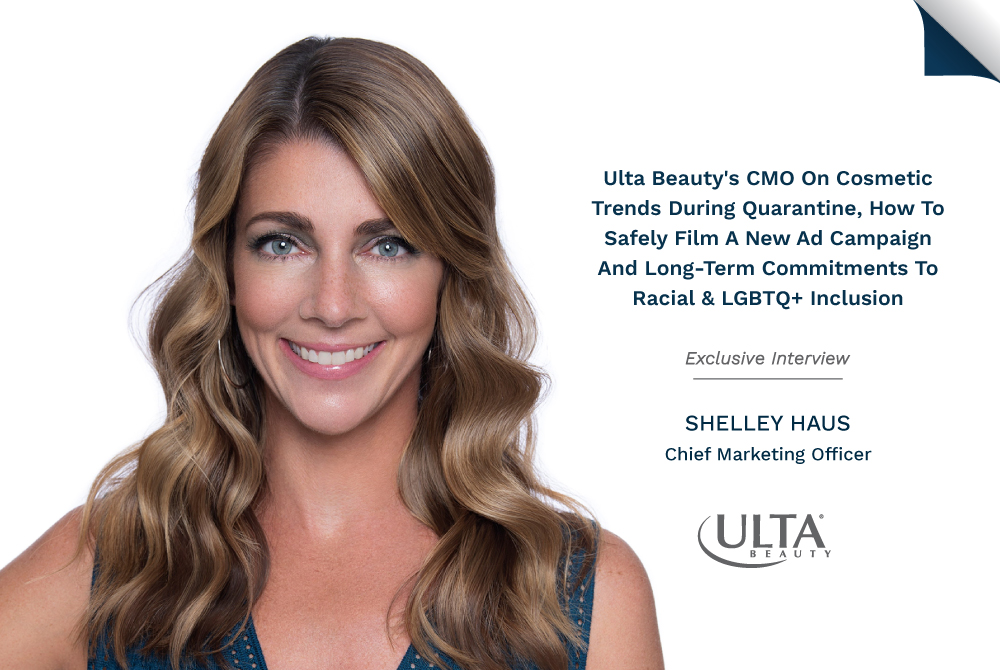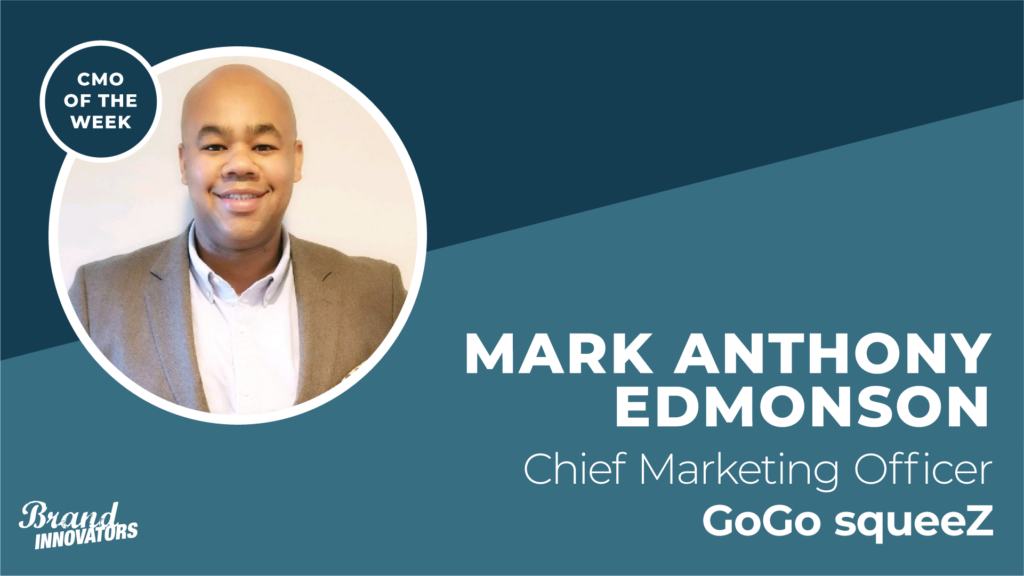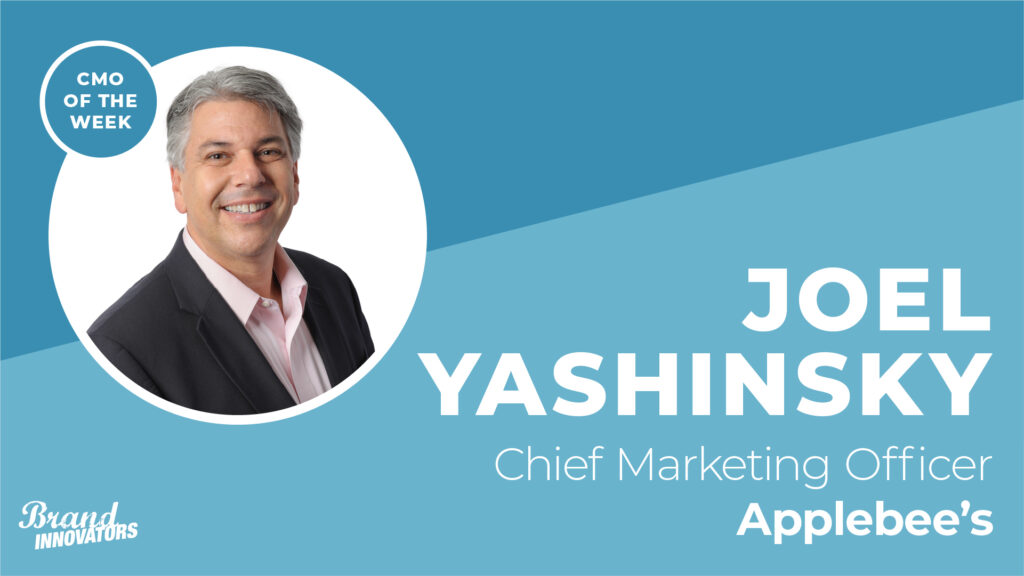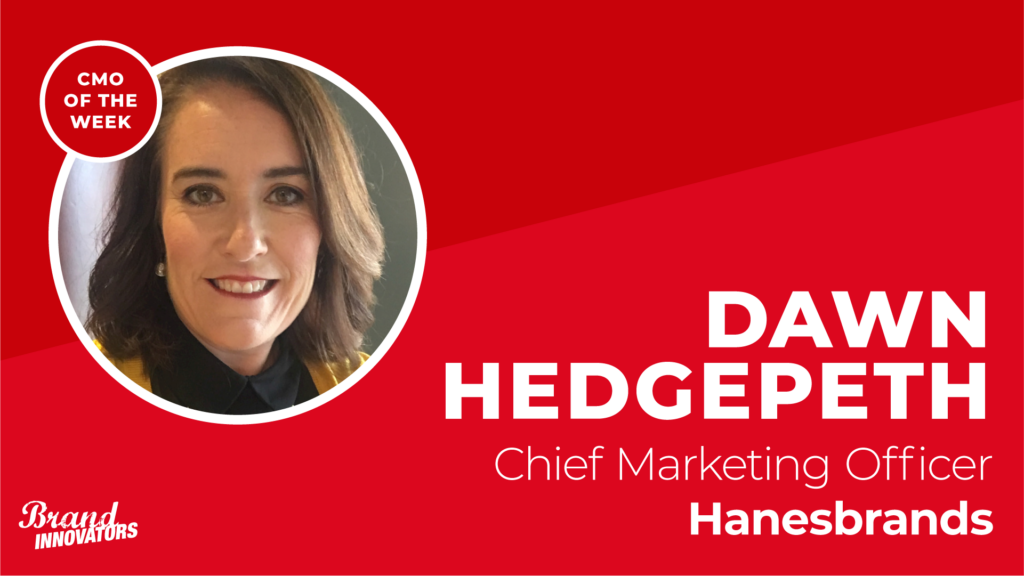Shelley Haus worked for Ulta Beauty for five years as VP and SVP of Brand Marketing before she was elevated to Chief Marketing Officer in December 2019, just months before the coronavirus pandemic caused all 1,200 of the beauty & cosmetic retailer’s locations to shut down for two months beginning in March.
So it came in handy when several forward-thinking initiatives Haus began piloting pre-pandemic suddenly became the norm — including curbside pickup, which was rolled out in select locations by April.
“The first few weeks of lockdown were spent looking at what we had that could meet the moment and accelerate it even faster,” Haus says. “We turned on ‘buy online and pickup in-store’ in Q4 of 2019, so that gave us the ability to flip on curbside pretty quickly. That was key to being able to give people ways to shop in an environment where they were very worried about safety and give them ways to engage with beauty on their terms.”
But it was that month-long period when Ulta Beauty was a 100% ecommerce business for the first time that Haus learned the most about how to pivot her business and utilize technology to meet consumer needs. App-based orders via the GlamLab app, powered by Ulta’s 2018 acquisitions of AI and augmented reality companies like GlamST, started picking up and fueled app features like virtual try-ons. “That, in turn, accelerated our move into providing more brow and lash options, so we had many more categories. Hair color was super popular as well – we had 250 different hair colors available for virtual try-on. That acceleration was really key. Now we have 9x the usage of GlamLab than we did just prior to the pandemic.”
The increase in app usership helped ecommerce sales grow 200% during Ulta Beauty’s most recent quarter, which wrapped Aug. 1. These sales, in turn, helped offset some of the COVID-based disruptions to the retailer’s business that caused overall sales to dip 26% (to $1.2 billion) during the same period.
Brand Innovators caught up with Haus from her home in Elmhurst, Ill., a Chicago suburb just outside Ulta’s headquarters in nearby Bolingbrook, to learn more about the pivots that have defined her first 10 months in her new role as CMO, a detailed breakdown of shooting her first COVID-safe ad campaign and Ulta’s long-term commitment to racial and LGBTQ+ inclusion. The conversation has been edited for length and clarity.
Brand Innovators: You were promoted to CMO in December, just weeks before the coronavirus pandemic changed everything. What were your initial plans for the Ulta brand heading into 2020, and how have you pivoted, changed or even accelerated some of those plans over the past seven months?
Shelley Haus: This was not how I envisioned my first year. Definitely not what I was thinking on New Year’s Eve 2019. But there’s a couple things I’m really proud about this year.
One is the work that we’ve done on defining the brand. Two years ago, we defined the “true north” purpose of the brand that made it much easier to flex during this time period.
Two is growing the team. I always joke, “you always need to have your A-team, but you never rely on it as much when the world falls apart around you.” The work that we did on crafting the A-team internally and agency partner-wise, I thank God for that work every day for this year. That was the linchpin to make it work and flex and move during this year.
The third thing I would say when you’re taking on a new role, much of which I already had but some of which I did not, is keeping the team together, cohesive and motivated. This is a huge leadership challenge when you’re in the middle of a pandemic, to stay communicated. So I went into hyper stealth mode with a double down focus to make those three things happen this year.
What were some product trends you noticed during those first few months of quarantine? What does beauty in COVID look like?
There have been a couple phases. At the beginning it was about safety, hand sanitizers and soaps, which pretty quickly turned into what I would call self-care and stress management. So things like skincare, where people maybe had a little bit more time and felt the need to do something for themselves. We have many examples of consumers creating new regimens around skincare. Bath and body was a big area and still is as the intersection with self-care has only accelerated that even further.
And with haircare, people couldn’t go to the salon, get their hair color done, root touch-ups. So then we created some hyper-relevant content with Ulta Beauty At Home and helped people understand what products they should use and how to use them. We also launched master classes to help people undo some of the mistakes they might have made during that time period.
Makeup has been an interesting one, since makeup was already changing before the pandemic. Even though we had several months where people weren’t outside their house, we still saw quite a lot of makeup usage. One for being Zoom ready, and two for fun and exploration. Makeup gives you a little bit of normalcy and feeling like yourself. And now that people are out and about a little bit more, that’s picking up even further. We’re seeing a reinvigoration into makeup, especially around eyes. People have masks on quite a bit, and the idea of having great lashes and having great brows and maybe even some fun color on their eyes is something fun. It helps them feel normal and have a form of self-expression.
One of Ulta’s campaign messages right now is “Beauty For All.” Tell me about what that phrase means to you as a brand and as a company, given the heightened advancement of diversity & inclusion we’ve seen this year.
Diversity & inclusion has been part of our DNA since the beginning of the company. We also feel like we have the responsibility and a great opportunity to shape the way the world sees beauty. So early on when we were shaping the purpose and articulation of who we are and who we want to be, that piece of it was so critical. And when we launched our first campaign “The Possibilities Are Beautiful,” around this purpose the idea of breaking the mold of what beauty looks like, it looks like all ages, all ethnicities, all body types, it looks like all genders, gender fluid, transgender, etc.
As we headed into our new campaign “Where Dreams Begin,” that idea of continuing to expand our “beauty for all narrative” was really critical to us. Not only in front of the camera and the story that we’re telling, but behind the camera too. That started with the music that we chose from Esabulu, whose stage name comes from the Kenyan village where her grandmother grew up. The campaign is called “Where Dreams Begin,” so giving a platform to people like her is where we live that idea.
And then if you look at the director that we chose, Malik Sayeed. He’s an incredible director who not only agreed to bring our vision to life, but he’s also done incredible things like Beyonce’s “Lemonade.” There’s also the production house that we hired, Little Minx, which is female black-owned with over 60% representation from minorities. So we’ll be telling this story and living this way throughout the months and years to come.
You touched on the very topical point of the importance for brands to have diverse representation on both sides of the camera. Do you have any set thresholds that you’re looking to reach as far as how much more diverse your leadership or external partners will look over the next few years?
This year has been emotional and a time of reflection, listening and learning for us. As an entire executive team, we’re proud of the representation that we have. We are 18% Black at the board level, 13% Black at the executive team level, and we’re really proud of that. But we have a lot more work to do. The one thing that we’ve done is establish a cross-functional working team around this as a true strategic business initiative. And right now, that team is architecting the roadmap of what the next three years will look like. There will be points where we will set targets and benchmarks, and where we will be transparent about those, just like we were in the #pulluporshutup challenge this summer. I’m excited to be able to share those over the next six months, but I’m really encouraged and excited about the traction we’ve already made.
Another facet of diversity that you’ve long championed, which you mentioned earlier, is the LGBTQ+ community. Given their foundational role in the Ulta Beauty customer base, as well as among your associates, what are some ways you engage them throughout the year in addition to Pride Month?
I’ll start with Pride. We use that month as a great way to celebrate, with products that are specifically created for that month, and we celebrate by highlighting guests and associates. We do that externally in social media, and we have a lot of going on internally to celebrate — whether it’s town halls to be able to hear panels speak about their experiences. We just had an amazing panel of our co-workers speak in June.
But to take that even further, we doubled down in the last year on our support and partnership with PFLAG throughout the year, so that has been important to us. It’s the little things that we’re doing, like during National Coming Out Day, which our CEO mentioned in her video this month. And we take our commitment even further to things like casting. In the new campaign, we highlight a transgender woman in the commercial. Those are the ways we celebrate the LGBTQ+ community 365 as we think about bringing that communication to life.
Tell us about the new campaign you launched last month. How did you navigate a fully virtual shoot, and what has the process taught you about the old days of 18-month planning cycles for campaigns?
Number one goes back to having the A-team. You gotta have an internal team, agency team and a director & production crew you really trust to put all those puzzle pieces together. Malik, our director, had done two shoots prior within this environment. So he was able to walk us through things they had learned, as well as our agency partner McCann had done things in all different ways that we could learn from. A-team and then learn from everything that’s been going on.
While we were able to keep up a stream of continuous communication while all working remotely, there were all sorts of things that threw wrenches in it, like a 48-hour hold on wardrobe. When you have a 48-hour hold and you’ve decided there’s something that’s not working, you have very limited options. So you have to plan ahead and work through some of these things, which isn’t ideal. And makeup touchups onset don’t really happen, which is a little difficult when you’re a makeup company.
But we had good learning for things that work well: Maybe everyone doesn’t need to be on set. Maybe virtual chats for camera angles could be OK. We had an amazing director and production crew who had learned how to make it work with fewer people on set and social distancing.
The real challenge was casting. People had to be cast with people in their bubbles. There were people that Malik knew where he’d say, “I know this neighbor, I know this person I’ve worked with before has a husband and a child they were bubbling with that could be a perfect for this spot.” The four girls in the spot are actually friends who live together.
So while it was difficult to do the casting, especially with the diversity that we’re trying to express, the silver lining of the moments that we captured is that they were all real. They were people that had relationships with each other. On the flip side, they were not professionals. In fact, most of them are not. So it goes back to the director who can bring out an authentic performance of people who aren’t used to being on-camera.
How has the new campaign made you rethink your media plan?
We’ve been on an evolution with media mix, and this year accelerated that. So when we became a 100% ecommerce business, we pulled a lot of traditional media and really leaned even more heavily into digital and social while we were crafting platforms like Ulta Beauty at Home, because it was a content-forward approach. Fast forward into a new campaign – streaming video and streaming radio are more important than ever before. Social both from an organic and paid standpoint are super important for that master-class content to help people correct the mistakes they might have made at home. TV is still important, network radio stil happens, it’s just an accelerated shift in the percent mix.
And the last thing I would say, back to our conversation around diversity & inclusion, is we’ve been really doubling down on thinking about the programming that we’re in. We have a Spanish version of our campaign, so pushing it out in those spaces with partners like Telemundo was really important to help reflect our story in the places that are most relevant to many people that we’re trying to reach.
What have the past seven months taught you as a marketer?
One thing this has taught us is flexibility is going to be the name of the game moving forward. Gone are the days of being so locked in, and luckily in March and April we had such great partners that were willing to work with us. We now have a different perspective on flexibility moving forward.
Andrew Hampp is an entertainment marketing consultant for Brand Innovators and the founder of consultancy 1803 LLC, based in Berkeley, California.




